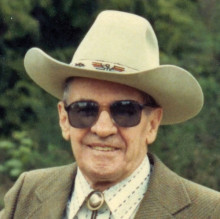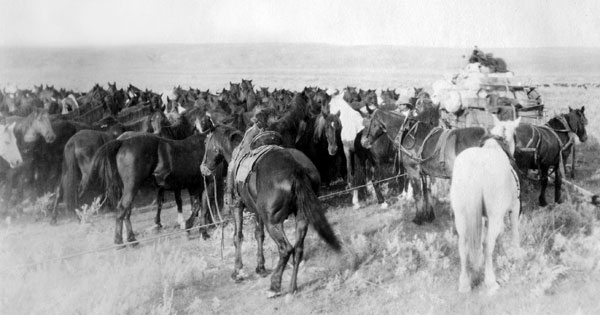
A Cowboy’s Life
Jim Boyle wanted to be a cowboy from the time he was five years old. Born in Crossfield, Alta., in 1910, his father Russell Boyle, a South Africa War veteran, was a horse rancher raising remounts for the army and RNWMP.
Lieutenant Colonel Russell Boyle went overseas in 1915 commanding the 10th Infantry Battalion and unfortunately died from wounds received at the battle of St. Julien-Kitchner’s Wood. The cowboys at his grandfather’s ranch at Carstairs became Jim’s mentors and he learned the ways of the open range and how to work cattle on big drives. The weather also gave him a survival lesson that year when a spring storm killed cattle by the thousands, completely wiping out some local ranches. For Jim Boyle, 1915 was a year of hard lessons and important epiphanies.
Jim was a horseman at heart and started his first colt when he was seven. Against his grandfather’s advice he chose a big rough gray, ran him into the stud corral, taught him to tie at the snubbing post and gentled him to the saddle. Jim finally backed him in a branding chute and then rode him out. His grandmother nearly fainted when she saw him on the back of the horse that had already crippled a bronc rider. By age nine he was breaking a neighbour’s horse for pay. “When I got that horse to quit bucking I noticed my grandfather was really hostile,” Jim once said in an interview. “I had bucked that old bronc out in granddad’s potato patch by mistake!”
Boyle made a few dollars breaking wild range horses southwest of Calgary for a trader named Bland. He gentled them near the street cars to desensitize them to noise then led the horses over storm sewers to get them used to rushing water.
Bland was about six foot six inches and as strong as a bull. Once, when Boyle was working a roan horse, it bucked its way into a narrow space between two buildings and stuck fast with its feet off the ground. Boyle stepped off the confused animal and handed the reins to Bland. The trader just tipped the horse over backwards and when Boyle got back on the horse it had forgotten how to buck.

At 14 when Boyle got into trouble for wearing his spurs in school, he left and took his first cowboying job for pay. He worked on a horse roundup near the McEwan Ranch with his friend Morris Shortt for $30 per month. The first gather of the roundup brought in 500 head and the cowboys decided to hold them in a box canyon. That night a storm spooked the herd and they had to start all over again.
Boyle began to rodeo in the 1920s in the days when bronc riders used a snubbing horse. The cowboy climbed aboard and was handed the shank, which was measured to his chin so that the horse could put his head down to buck. Jim remembered that the early bucking chutes had solid sides and the gate opened to the front. However, many cowboys were hurt with the front opening chutes so the modern side opening style was developed.
One Sunday afternoon in 1926 some of the riders went down to the rodeo grounds to see the new Brahma steers. They were restless and one jumped over an eight-foot fence and ran through the grandstand and out into the midway. A couple of cowboys galloped in hot pursuit as the steer crossed the Elbow River Bridge running flat out. The cowboys roped him in Elbow Park and brought him back on a stone boat with a team of horses.

In the 1930s Austin Reed, a retired Alberta livestock detective was the cow boss of the Nicola Valley Ranch in B.C. He asked Boyle to come and break horses for him. The ranch had about 12,000 cattle and 200 horses and he rode six a day for $35 a month, it took the year to break them. Boyle rode most of the rough off and then the 20 permanent cowboys put them to work. Range work on the Nicola, especially in the timber, could be rough, so after a season a horse was well broke.
During the winter months at the Nicola, Boyle fed cattle on the Stump Lake range where the temperature hovered around -15ºF. Once a week he rode to the headquarters for mail and supplies but one day he found that 27 cows had fallen through the ice. They were drowning and too far from shore to get them out so he had to shoot them.
Boyle returned from WWII to work on several ranches in the Invermere Valley of southeastern B.C. He met his wife Clara and eventually retired to Vancouver Island in 1979. Jim Boyle passed away in 1987.














